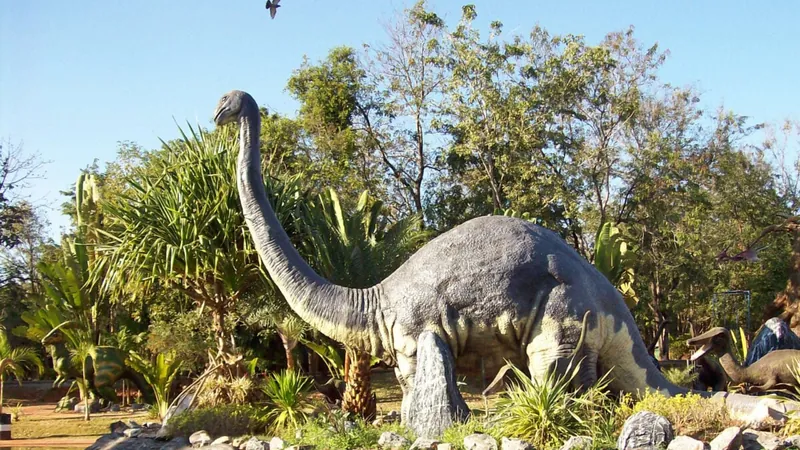
How Dinosaurs Changed the Earth: The Surprising Fallout of Their Extinction
2025-09-20
Author: Yan
A Dramatic Shift in Earth's Landscape
When non-avian dinosaurs vanished from the planet, it wasn't just a loss of colossal creatures; it sparked a transformative upheaval in Earth's geology. Recent research reveals that their extinction caused profound changes to the landscape that we can still observe today—far beyond the well-known Chicxulub asteroid impact.
The K-Pg Extinction: More Than Meets the Eye
According to a groundbreaking study featured in Communications Earth & Environment, researchers discovered that dinosaurs significantly influenced their environment in ways that shaped the geological record. This event, known as the Cretaceous-Paleogene (K-Pg) mass extinction, allowed lush forests to propagate, stabilizing soils and altering river systems into sweeping curves.
Luke Weaver, a paleontologist at the University of Michigan, explains, "Typically, we consider how environmental changes affect life. This study flips that notion, showing life can alter the climate and landscape too."
Unraveling Geological Mysteries
The team focused on the Williston and Bighorn Basins—regions in North America rich with geological history. They examined the Fort Union Formation, which thrives after the dinosaurs' time, revealing vibrant rock layers akin to colorful pajama stripes. Previous studies misclassified these layers as pond deposits, but Weaver and his colleagues have shown they actually consist of river point bars—active deltas within meandering rivers.
Forests: The Game Changer
Over these river deposits lay thick layers of coal, indicating the flourishing plant life that resulted from stable forests—an outcome of the dinosaurs' extinction. When dinosaurs roamed, their massive presence kept vegetation sparse and allowed rivers to flood frequently. Post-extinction, the thriving forests stabilized sediments, leading to the unique river formations we see today.
The Iridium Anomaly Connection
In their search for clues, researchers explored the iridium anomaly, a telltale sign of the asteroid impact that marked the K-Pg boundary. They found that this distinct layer appears right at the geological shift between the dinosaur and mammal eras, suggesting a massive change in the environment—likely influenced by the extinction itself.
Dinosaurs as Ecosystem Engineers
As the team delved deeper, they recognized an intriguing parallel with modern elephants, known for their ecosystem-shaping behavior. It became clear that dinosaurs were the original 'ecosystem engineers.' Their sheer size and feeding habits may have sculpted vast landscapes, paving the way for dense forests after their eradication.
Courtney Sprain, a co-author of the study, expressed excitement at the revelations, stating, "The evidence suggests that the impact of their extinction goes beyond fossil absence; it signifies real changes in sediment composition and landscape."
A Legacy Etched in Stone
This research sheds new light on the intricate ties between life and the Earth’s systems, revealing that the colossal presence of dinosaurs kept certain environments under control. Their disappearance not only opened the door for lush forests but forever altered the course of Earth's geological narrative, leaving a legacy that continues to intrigue scientists today.

 Brasil (PT)
Brasil (PT)
 Canada (EN)
Canada (EN)
 Chile (ES)
Chile (ES)
 Česko (CS)
Česko (CS)
 대한민국 (KO)
대한민국 (KO)
 España (ES)
España (ES)
 France (FR)
France (FR)
 Hong Kong (EN)
Hong Kong (EN)
 Italia (IT)
Italia (IT)
 日本 (JA)
日本 (JA)
 Magyarország (HU)
Magyarország (HU)
 Norge (NO)
Norge (NO)
 Polska (PL)
Polska (PL)
 Schweiz (DE)
Schweiz (DE)
 Singapore (EN)
Singapore (EN)
 Sverige (SV)
Sverige (SV)
 Suomi (FI)
Suomi (FI)
 Türkiye (TR)
Türkiye (TR)
 الإمارات العربية المتحدة (AR)
الإمارات العربية المتحدة (AR)